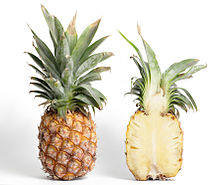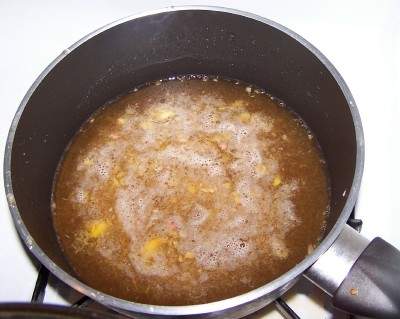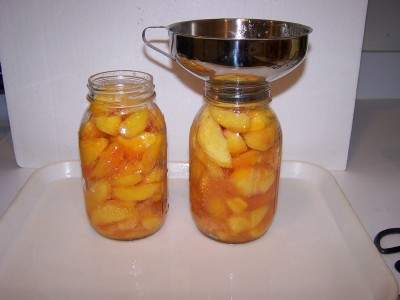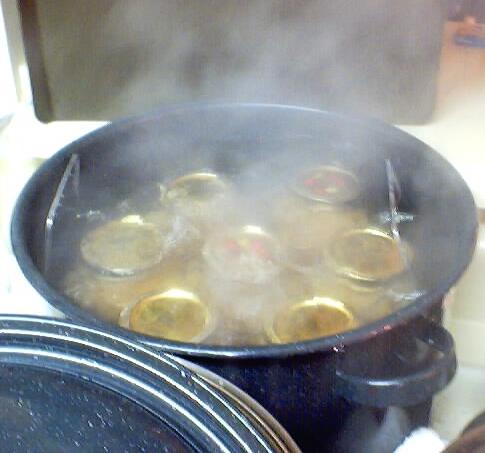
Looking for How to Easily Make Pineapple Jam! EASY, illustrated step-by-step instructions! in 2025? Scroll down this page and follow the links. And if you bring home some fruit or vegetables and want to can, freeze, make jam, salsa or pickles, see this page for simple, reliable, illustrated canning, freezing or preserving directions. There are plenty of other related resources, click on the resources dropdown above. If you are having a hard time finding canning lids, I've used these, and they're a great price & ship in 2 days.
If you have questions or feedback, please let me know! There are affiliate links on this page. Read our disclosure policy to learn more.
How to Easily Make Pineapple Jam! EASY, illustrated step-by-step instructions!
How to Make Homemade Canned Pineapple - Easily!
Click here for a PDF print version
Making and canning your own pineapple is also quite easy. Here's how to do it, in easy steps and completely illustrated. If your looking for a jam recipe and directions, click here! We also have directions to make applesauce, apple butter, pickles and others!
Ingredients
- Pineapple - An average of 21 pounds of fresh pineapple (just the body, without the tops) is needed per canner load of 7 quarts; an average of 13 pounds is needed per canner load of 9 pints - an average of 3 pounds per quart.
- Lemon Juice - 3 tablespoons lemon juice
- Sugar - Sugar (or fruit juice, or Stevia (in a prepared form like Truvia, it measures same as sugar; if you use another form, you will need do your own conversion) - or Splenda, if you prefer, , or just water!)
Equipment
- Jar funnel ($5 at Target, other big box stores, and often grocery stores; and available online - see this page) or order it as part of the kit with the Jar grabber .
- At least 1 large pot; I prefer 16 to 20 quart Nonstick ceramic coated pots for easy cleanup.
- Large spoons and ladles,
- 1 Water Bath Canner (a huge pot to sanitize the jars after filling (about $30 to $35 at mall kitchen stores, sometimes at big box stores and grocery stores.). Note: we sell canners and supplies here, too - at excellent prices - and it helps support this web site!
- Half pint canning jars (Grocery stores, like Publix, Kroger, Safeway carry them, as do some big box stores - now about $12 per dozen quart jars (up 50% in 2 years!) including the lids and rings)
- Lids - thin, flat, round metal lids with a gum binder that seals them against the top of the jar. They may only be used once.
- Rings - metal bands that secure the lids to the jars. They may be reused many times.
- Jar grabber (to pick up the hot jars) - Big box stores and
grocery stores sometimes carry them; and it is available online - see
this page. It's a tremendously useful to put jars in the canner and take
the hot jars out (without scalding yourself!). The kit sold below has
everything you need, and at a pretty good price:
Optional stuff:
- Lid lifter (has a magnet to pick the lids out of the almost-boiling water where you sanitize them. ($4 at big box stores or it comes in the kit at left)
Canning Pineapple Directions
This example shows you how to make home-canned pineapple, using methods tested by the USDA and Ball. The yield from this recipe is about 4 or 5 eight-ounce jars.
Step 1 - Prepare the pineapple the Ingredients
Wash the pineapple in cold water. Core and remove eyes and tough fiber. Slice or cube (3/4 inch or 3 cm cubes).
Step 2 - Get the jars and lids washed
The dishwasher is fine for the jars; especially if it has a "sanitize" cycle; you don't really have to sanitize the jars - the boiling water bath sanitizes everything, jar, lid, contents and all; but you DO want to get the jars as clean as you can first. I get the dishwasher going while I'm preparing everything else, so the jars are clean and hot (and less likely to crack when you put boiling hot fruit in them) by the time I'm ready to fill the jars.
Lids: Put the lids into a pan of hot water for at least several minutes; to soften up the gummed surface and clean the lids.



Need lids, rings and replacement jars?
Get them all here, delivered direct to your home, at the best prices on the internet!
Step 3 - Make your syrup
Pineapple may be packed in water, apple juice, white grape juice, or in very light, light, or medium syrup. It's up to you which to use. Sugar is added to improve flavor, help stabilize color, and retain the shape of the fruit. It is not added as a preservative. Sugar solution is much less expensive (unless you have a supply of cheap grape juice), so I usually use a light solution to keep sugar (and the added calories) to a minimum.
| Syrup | Sugar | Water | Yield |
| Light | 2 cups | 6 cups | 7 cups |
|---|---|---|---|
| Medium | 3 cups | 6 cups | 6 1/2 cups |
| Heavy | 4 cups | 6 cups | 7 cups |

To prepare syrup, while heating water, add sugar slowly, stirring constantly to dissolve. Bring to a gentle boil and keep it simmering. After preparing the liquid syrup, keep it hot (but not boiling).
Step 4 - Hot Packing your pineapple
Hot packing is recommended for all fruits because it is a bit safer and makes fruit easier to pack in jars. Hot packed pineapples are also less likely to float than pineapples canned by the raw-pack method. Hot packing also helps top reduce air entrapment (bubbles) as the cell structure of pineapples tends to retain air; which is released during the heating prior to the jars being filled. Hot packing also tends to produce brighter colors.
Just put the cut pineapple into the barely boiling syrup solution for 10 minutes. ]
(If
you still want to use the "cold pack" or "raw pack" method, just skip this
step!)
Step 5 - Fill the jars
 Pack
the pineapples into sanitized jars (leaving 1/2 to 1 inch space at the top)
and cover with boiling sugar syrup leaving 1/2 inch head space. (if you
don't cook or heat the pineapples first, this is called "cold packing"). Run
a rubber spatula or table knife gently between pineapples and jar to release
trapped air bubbles. To do this more effectively, tilt the jar slightly
while running the tool between the fruit and the edge of the jar and also
pressing inward against the fruit a few times.
Pack
the pineapples into sanitized jars (leaving 1/2 to 1 inch space at the top)
and cover with boiling sugar syrup leaving 1/2 inch head space. (if you
don't cook or heat the pineapples first, this is called "cold packing"). Run
a rubber spatula or table knife gently between pineapples and jar to release
trapped air bubbles. To do this more effectively, tilt the jar slightly
while running the tool between the fruit and the edge of the jar and also
pressing inward against the fruit a few times.
After packing the pineapples in the jar, pour the syrup solution up to 1/2 inch (1 cm) from the top. the fruit should be covered completely. If you have problems with fruit darkening (turning brown) later, then sprinkle 1/2 teaspoon of FruitFresh or ascorbic acid into the top of the jar before you seal it.
Wipe rim and screw threads with a clean damp cloth. Add lid, screw band
and tighten firmly and evenly. Do not over tighten.
See here for related tools, equipment, supplies on Amazon
Tips!
Canned
fruits often will float if the sugar syrup is too heavy, if jars are
packed too loosely or if air remains in the tissues of the fruit after
processing. To avoid this use a light or medium sugar syrup, make sure
fruit is firm and ripe and pack fruit tightly in jars without crushing.
If fruit is not covered by liquid it may darken during storage (but does
not necessarily mean it is spoiled, as all fruits will darken somewhat).
To avoid this be sure fruit is covered by removing air bubbles from jars
liquid while still leaving the recommended head space. Also be sure to
remove trapped air bubbles as described earlier.
Pineapples, peaches, pears and apples may also show a blue, red or pink color change
after canning. This is the result of natural chemical changes that
sometimes occur as fruits are heated. It is harmless and won't affect
flavor!
Also, avoid storing canned food near heat sources such as a furnace,
water heater, hot water or sunny areas. Jars need to be kept cool and
dark for longer storage life and to protect against spoilage. Be sure to
store in a dry place. If the lid or band rusts, that can cause the seal
to break.
Step 6 - Process the jars in the water bath
Keep the sealed jars covered with at least 2 inches of water. Keep the water boiling. Boil them for at 15 minutes (see the chart below).
| Recommended process time for Hot-Pack Canning Pineapple in a boiling-water canner. | ||||
| Jar Size | Process Time at Altitudes of | |||
| 0 - 1,000 ft | 1,001 - 3,000 ft | 3,001 - 6,000 ft | Above 6,000 ft | |
| Pints | 15 min | 20 | 20 | 25 |
| Quarts | 20 min | 25 | 30 | 35 |
Step 7 - Done
Lift the jars out of the water and let them cool without touching or bumping them in a draft-free place (usually takes overnight) You can then remove the rings if you like, but if you leave them on, at least loosen them quite a bit, so they don't rust in place due to trapped moisture. Once the jars are cool, you can check that they are sealed verifying that the lid has been sucked down. Just press in the center, gently, with your finger. If it pops up and down (often making a popping sound), it is not sealed. If you put the jar in the refrigerator right away, you can still use it. Some people replace the lid and reprocess the jar, then that's a bit iffy. If you heat the contents back up, re-jar them (with a new lid) and the full time in the canner, it's usually ok.
Once cooled, they're ready to store. I find they last about 18 months. After that, the get darker in color and start to get runny. They are safe to eat, but the flavor is bland. So eat them in the first 12 to 18 months after you prepare them!
Summary - Cost of Making Homemade Canned Pineapple - makes 10 jars of 8 oz each* |
||||
| Item | Quantity | Cost in 20012 | Source | Subtotal |
| Oranges | 8 medium or large sized | $2.00 | Grocery store | $2.00 |
| Lemons | 2 | $1.00 | Grocery Store | $1.00 |
| Canning jars (8 oz size), includes lids and rings | 10 jars | $11/dozen 8 oz jars or $0.92/jar |
Grocery stores (Publix, Kroger, Safeway, etc.) | $5.50 |
| Sugar | 4 cups | $2.00 | Grocery stores (Publix, Kroger, Safeway, etc.) | $2.00 |
| Pectin (low sugar, dry) | 1 and a third boxes | $2.00 per box | Grocery stores (Publix, Kroger, Safeway, etc.) | $2.70 |
| Total | $13.20 total or about $1.32 per jar |
|||
|
* - This assumes you already have the pots, pans, ladles,, and reusable equipment. Note that you can reuse the jars! Many products are sold in jars that will take the lids and rings for canning. For example, Classico Spaghetti sauce is in quart sized jars that work with Ball and Kerr lids and rings. See this page for information about reusing jars from commercial products for home canning. |
||||
Can't find the equipment? We ship to all 50 states! Use our Feedback form!
Answers to Common Questions
- Why should cooked jam be made in small
batches?
If a larger quantity of juice is used, it will be necessary to boil it longer thus causing loss of flavor, darkening of the jam, and toughening of the finished product. It really doesn't work. Trust me; I've tried many times! - Should jam be boiled slowly or rapidly?
It should be boiled rapidly, since long, slow boiling destroys the pectin in the fruit juice. - What do I do if there's mold on my jam?
Discard jams and jellies with mold on them. The mold could be producing a mycotoxin (poisonous substance that can make you sick). USDA and microbiologists recommend against scooping out the mold and using the remaining jam or jam. - Why did my jam ferment, and what do I do?
Jellied fruit products may ferment because of yeast growth. This can occur if the product is improperly processed and sealed, or if the sugar content is low. Fermented fruit products have a disagreeable taste. Discard them. - What happens if my jam doesn't gel?
It's not hard to fix runny jam. See our how to re-make runny jam or jelly instructions on this page. Directions about remaking uncooked jams or jellies can be found in a CES Publication from Ohio State University.
If you want to learn how NOT to make marmalade, read this entertaining account from this Australian woman who is either incredibly cheap or a slow learner... but either way, it's a funny story!
And if our recipe is too EASY for you and you would like a much more complicated approach that will take about 4 hours to complete, try Delia Smith's (a cook who is famous in the UK) pineapple jam recipe!
Canning Books, Supplies and Accessories
These are my favorite essential canning tools, books and supplies. I've been using many of these for over 50 years of canning! The ones below on this page are just the sampling of. my preferred tools. but you can find much more detailed and extensive selections on the pages that are linked below.
- Vacuum Foodsealers for freezing, dried foods, and refrigerated foods - the FoodSaver line
- Selecting a KitchenAid mixer and attachments for home canning
- Steam Juicers
- Strainers, pit removers, seed-skin-stem removers, jelly strainers, etc. All types, makes and prices (from $19 to $350)
- Cherry pitters reviews, prices and ordering
- Food dehydrators - easy and fast to dry your own fruits, veggies, sun-dried tomatoes, etc.
The All New Ball Book Of Canning And Preserving: Over 350 of the Best Canned, Jammed, Pickled, and Preserved Recipes Paperback
This is THE book on canning! My grandmother used this book when I was a child.; It tells you in simple instructions how to can almost anything; complete with recipes for jam, jellies, pickles, sauces, canning vegetables, meats, etc.
If it can be canned, this book likely tells you how! Click on the link below for more information and / or to buy (no obligation to buy)The New Ball Blue Book of Canning and Preserving
Canning and Preserving for Dummies by Karen Ward
This is another popular canning book. Click here for more information, reviews, prices for Canning and Preserving For Dummies
Of course, you do not need to buy ANY canning book as I have about 500 canning, freezing, dehydrating and more recipes all online for free, just see Easy Home Canning Directions.
Home Canning Kits
See here for related tools, equipment, supplies on Amazon See here for related tools, equipment, supplies on Amazon
I have several canners, and my favorite is the stainless steel one at right. It is easy to clean and seems like it will last forever. Mine is 10 years old and looks like new.
The black ones are the same type of standard canner that my grandmother used to make everything from applesauce to jams and jellies to tomato and spaghetti sauce.
This complete kit includes everything you need and lasts for years: the canner, jar rack, Jar grabber tongs, lid lifting wand, a plastic funnel, labels, bubble freer, It's much cheaper than buying the items separately. It's only missing the bible of canning, the Ball Blue Book.
You will never need anything else except jars & lids (and the jars are reusable)!
The complete list of canners is on these pages:
- Water bath canners - Good for acidic foods, like applesauce, pickles, salsa, jams, jellies, most fruits
- Pressure canners - needed for low and non-acidic foods, like canned vegetables (corn, green beans, etc), and meats
- Canners for glass top stoves if you have a glass or ceramic stove
- Canners for induction stovetops
Pressure Canners
If you plan on canning non-acidic foods and low acid foods that are not pickled - this means: meats, seafood, soups, green beans corn, most vegetables, etc., then you ABSOLUTELY must use a Pressure Canner.
Of course, you can use a pressure canner as a water bath canner as well - just don't seal it up, so it does not pressurize. This means a Pressure Canner is a 2-in-1 device. With it, you can can almost ANYTHING.
There are also other supplies, accessories, tools and more canners, of different styles, makes and prices, click here!
Basic Canning Accessories
From left to right:
- Jar lifting tongs to pick up hot jars
- Lid sanitizer / lifter - to remove lids from the pot of boiling water (sterilizing )
- Lids- disposable - you may only use them once
- Ring - holds the lids on the jar until after the jars cool - then you remove them, save them and reuse them
- Canning Jar funnel - to fill the jars
FREE Illustrated Canning, Freezing, Jam Instructions and Recipes
Don't spend money on books. that you don't need to. Almost everything you can find in some book sold online or in a store is on my website here for free. Start with theEasy Home Canning Directions below. That is a master list of canning directions which are all based upon the Ball Bblue book, the National Center for Home Food Preservation and other reputable lab tested recipes. Almost every recipe I present in addition to being lab tested com. is in a step by step format with photos for each step and complete. explanations. that tell you how to do it, where to get the supplies and pretty much everything you need to know. In addition, there almost always in a PDF format so you can print them out and use them while you cook.
[ Easy Home Canning Directions]
[FAQs - Answers to common questions and problems]
[Recommended books about home canning, jam making, drying and preserving!]
Looking for canning equipment and supplies?
Water bath canner with a jar rack
Pressure canners for gas, electric and induction stoves: Presto 23Qt or T-fal 22Qt
Canning scoop (this one is PERFECT)
Ball Blue book (most recent version)
Jars: 8oz canning jars for jams
Find Other types of farms:
Farm markets and roadside stands
Road trips and camping resources
Local Honey, apiaries, beekeepers
Consumer fraud and scams information
Home canning supplies at the best prices on the internet!
Maple Syrup Farms, sugarworks, maple syrup festivals
Environmental information and resources
Farms For Your Event for birthday parties, weddings, receptions, business meetings, retreats, etc.
Festivals - local fruit and vegetable festivals
Get the
most recent version of
the Ball Blue Book
With this Presto 23 quart pressure canner and pressure cooker, you can "can" everything, fruits, vegetables, jams, jellies, salsa, applesauce, pickles, even meats, soups, stews. Model 01781

You can make jams, jellies, can fruit, applesauce, salsa and pickles with water bath canners, like this Granite Ware 12-Piece Canner Kit, Jar Rack, Blancher, Colander and 5 piece Canning Tool Set




